The National Geographic Society BAT ECHO team is reunited, Ralph Simon having arrived in Ecuador a week after Merlin and me. At the University of Erlangen and the University of Ulm-Germany, Ralph has done his doctoral research on how plants have evolved special structures to guide echo-locating bats to their flowers. We met him at the 2010 International Bat Researchers Conference in Prague where he gave fascinating lectures on the subject. Merlin suggested they make a proposal to NG for an article, and it was approved.
- Photography began last November in Costa Rica which resulted in photos of bats visiting inflorescences of the vine Macuna holtonii.
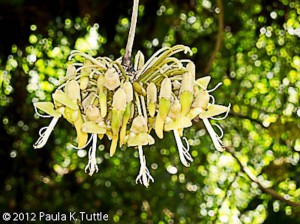
- In April we returned from a month in Cuba where Merlin photographed bats feeding from unique nectaries of the endemic vine Marcgravia evenia.
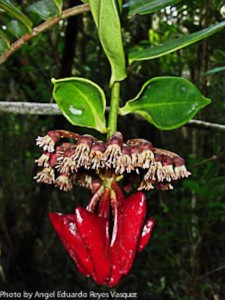
- Ecuador is the third and final destination where we most recently photographed bats pollinating flowers of the rare cactus, Espostoa frutescens, endemic to Ecuador and found only in this one region of the southern highlands of Ecuador.
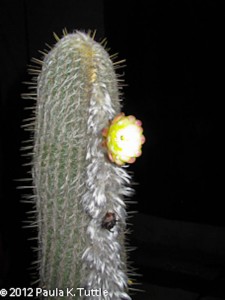
The BAT ECHO team’s base of operations in Ecuador is Ferbola Organic Farm www.susudelorganico.com in the southern highlands of the Andes where we are comfortable and well fed. It’s located an hour and a half drive south of the historic city of Cuenca in the tiny village of Susudel. The weather in this area is spring-like all year, making it ideal for growing a wide variety of crops, many of which we’ve never encountered before. In this part of Ecuador the rainy season is October to early May. And in the ten days we’ve been here, we’ve only had a few brief showers.
We’re here to photograph the flowers of the Espostoa futescens cactus, endemic to Ecuador and found only in one particular river valley. The cacti grow on steep cliffs above the river in semi-desert conditions . The flower buds are covered in a thick fur-like beard. Most of the flowering occurred prior to our arrival, so we have had to search many plants to find buds, sometimes climbing as much as 1,500 vertical feet to reach a single location where these rare plants are found. 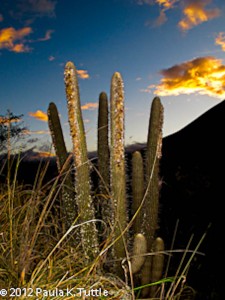
The vegetation is prickly, leaving us with scratches and festering sores from imbedded cactus spines and thorns. When we finally find a bud, we must wait till nighttime for it to open, giving us just a few hours to photograph the bats going to the flower before it closes. The flowers bloom once and dry up.
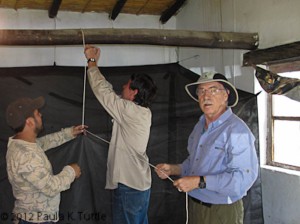
The first day of our arrival to the farm, we set up our traveling studio in a storage room. We’ve been netting for nectarivorous bats in a local banana grove. So far we’ve only found Anoura geoffroyi and Glossophaga soricina. Each night, we create a different set using a cactus with an open flower, and Merlin photographs our captive bats visiting the flowers for the nectar.

